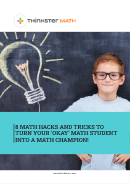What are mutually exclusive events?
The term “mutually exclusive” simply means that something cannot happen at the same time as something else. So, when you apply that to an event in probability, mutually exclusive events just mean that there are two (or more) events that cannot happen at the same time. A popular example of mutually exclusive events is tossing a coin: you can either land a heads or a tails but you cannot have both!
How to use this concept?
You can use this concept of mutually exclusive events in probability problems in order to identify which events are mutually exclusive and then imply that P(A∩B) = 0 for those two events (or maybe more). Knowing this aids the process of finding other missing quantities in probability problems (have a look at some of the solved examples below). P(A∩B) is commonly used in many formulae, one of the being:
P(A∪B) = P(A) + P(B) -P(A∩B)


